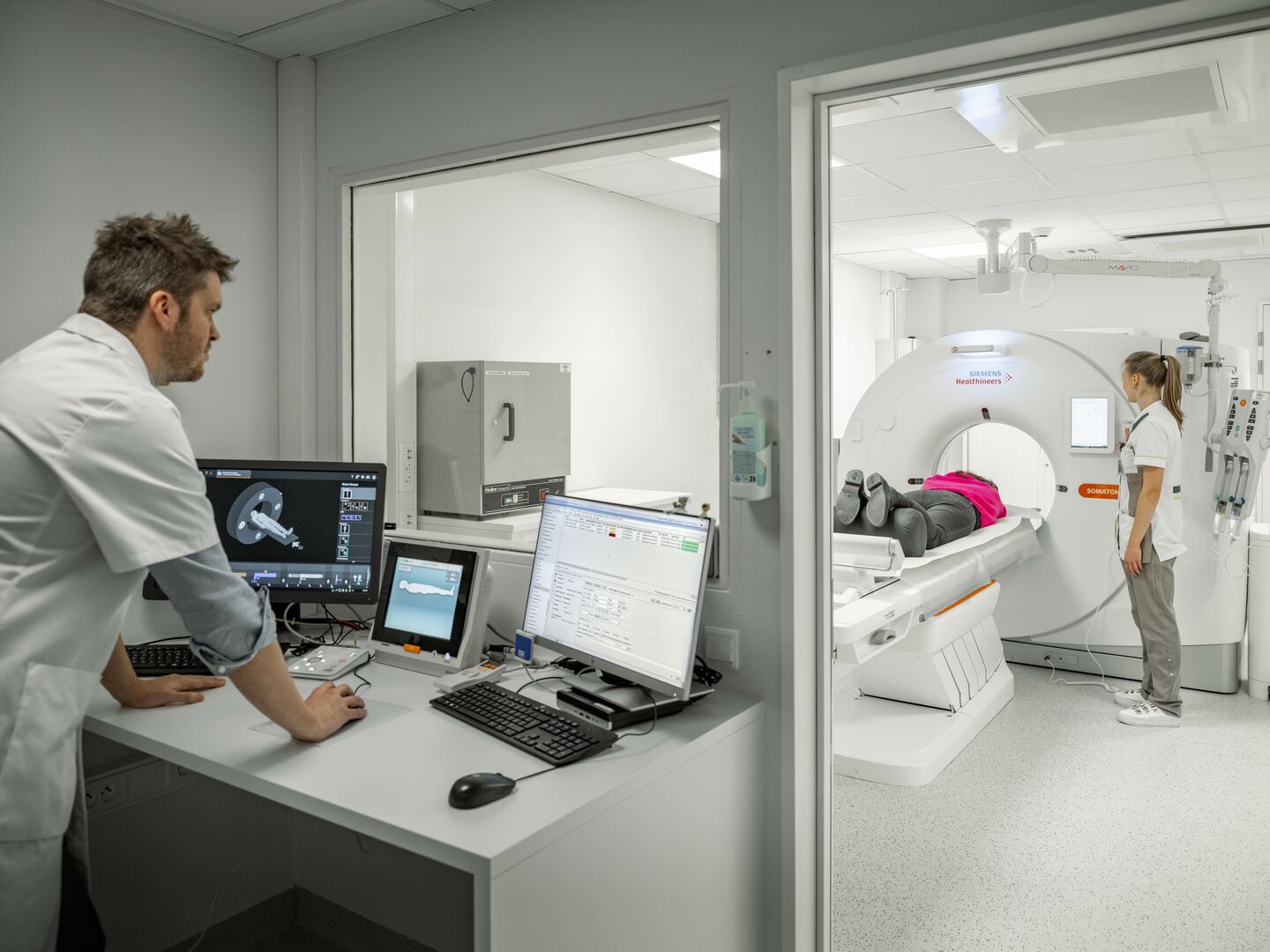CT examination blood vessels
Plan your appointment
Course of the examination
The examination lasts ten to twenty minutes and is not painful. No anesthesia is required.
We use IV contrast to make the blood vessels optimally visible. Once you get the contrast fluid injected, you will feel a prick in a vein of the arm, similar to a blood draw. The product gives a heat sensation all over the body, especially at the level of the throat and lower abdomen. This sensation disappears after a minute. You don't have to worry about that.
If your heart rhythm is too high, the radiologist may decide to administer medication through an infusion to slow the heart rhythm (Cedocard®SL and/or Seloken®IV).
After the examination, we can make 3D reconstructions on a workstation.
The radiologist who performed the examination makes an initial interpretation of the images during the examination. After the final interpretation, the radiologist sends a report to the doctor who requested the examination. Only this doctor can discuss the results with you.
This examination is only possible by appointment. Please always bring your identity card, your doctor's prescription and any previous radiological examinations. You must follow a specific preparation beforehand.

Preparation
For this examination, you must be sober 4 hours beforehand.
In the 12 hours prior to the examination, follow the guidelines below to prevent your heart rhythm from accelerating:
- Do not drink beverages with caffeine (coffee, cola,...)
- No smoking
- Do not do strenuous efforts
Your daily medications should be taken, especially if they are beta blockers.
Important things that you should report for scanner screening: pregnancy, allergy, certain conditions (see questionnaire to fill out beforehand).
Aftercare
To remove the contrast fluid as quickly as possible, we recommend that you drink plenty of fluids after the examination.